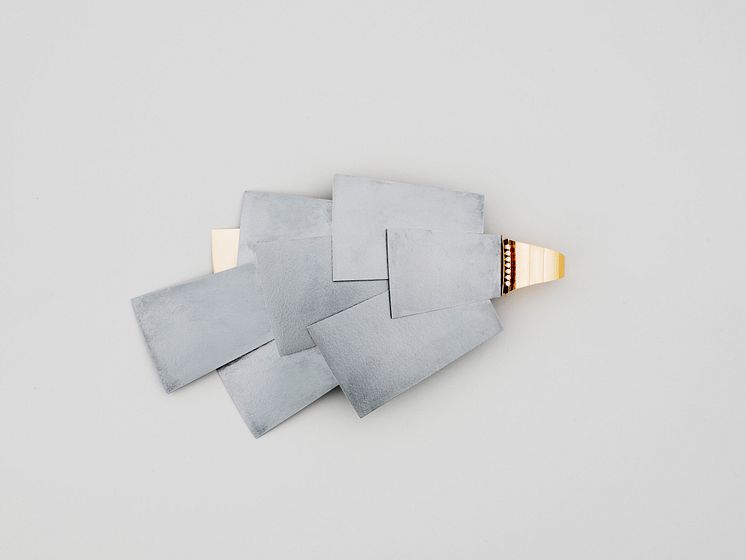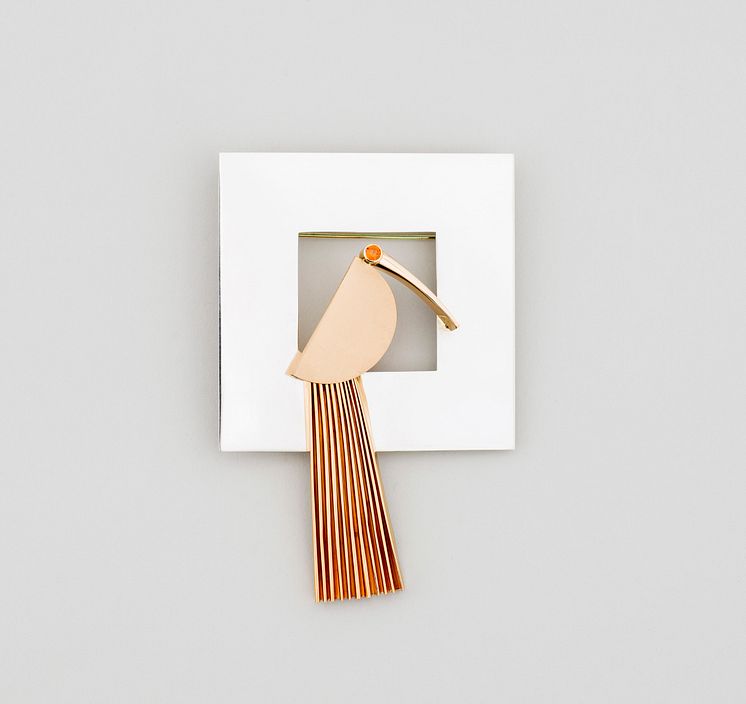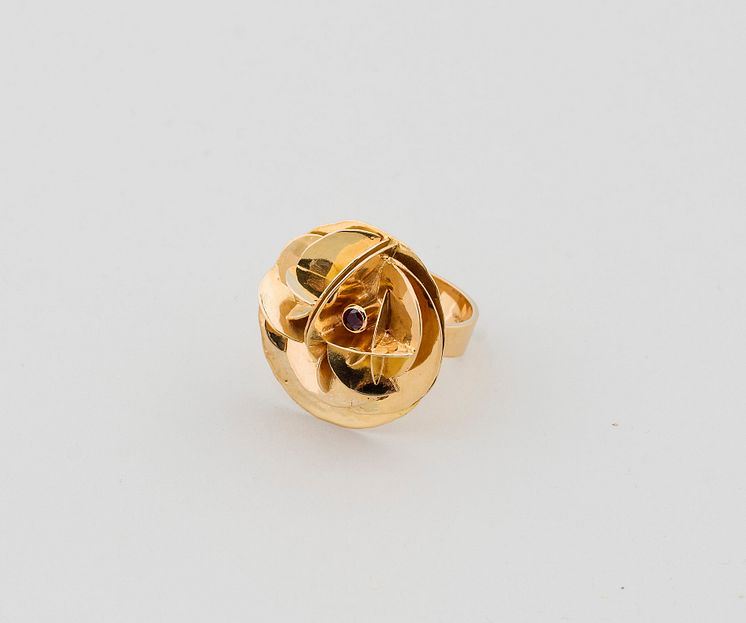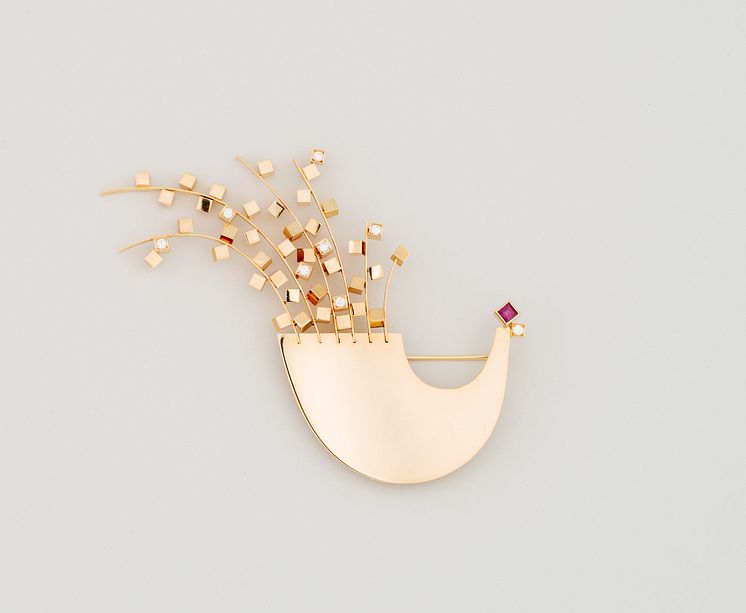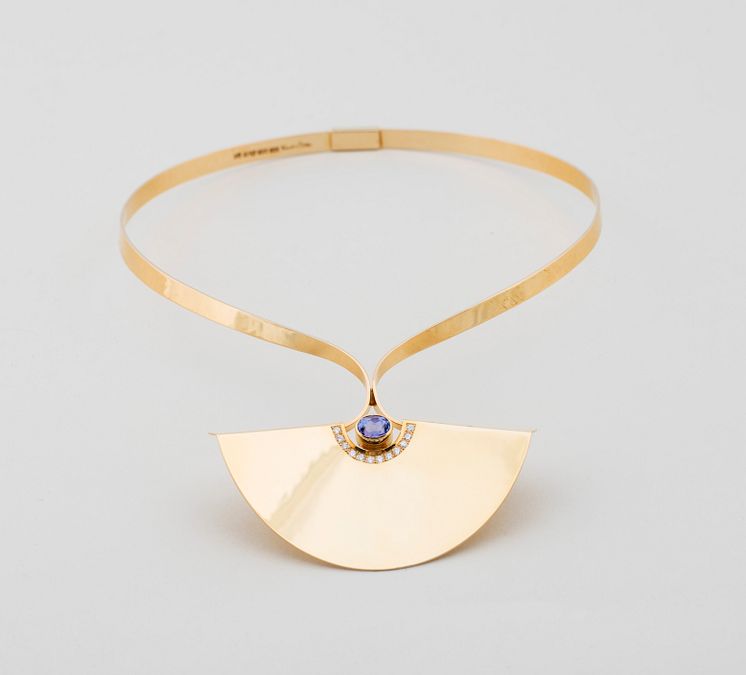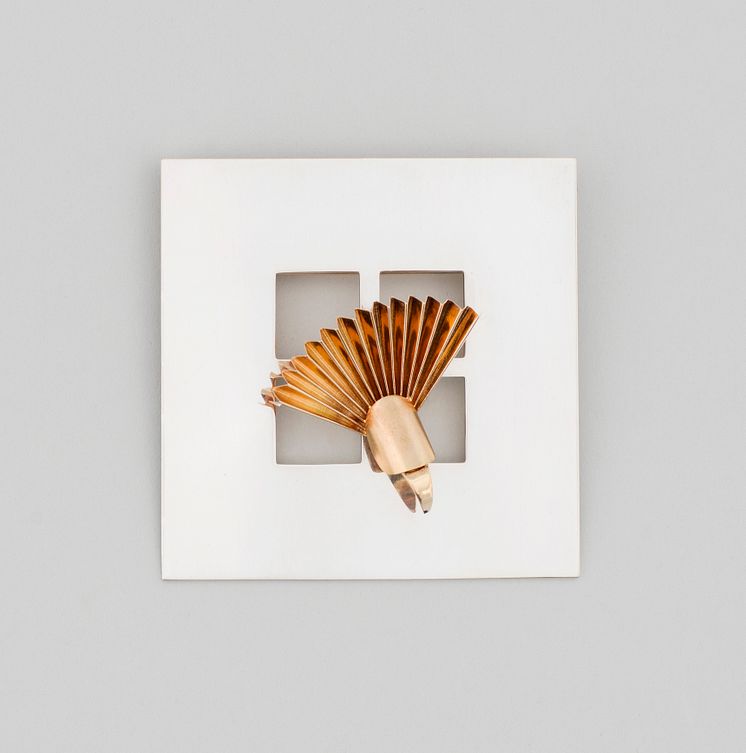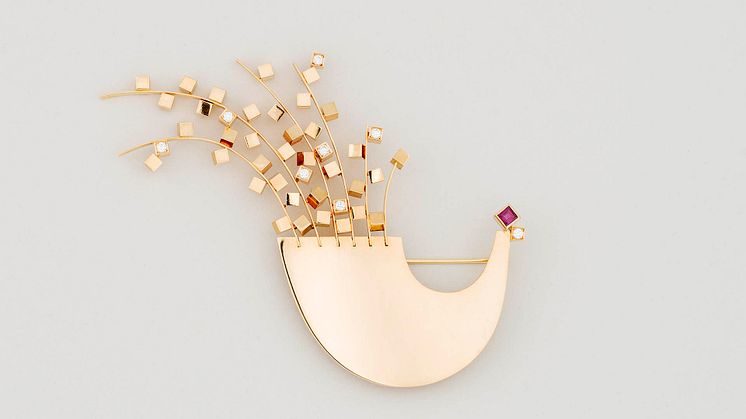
Press release -
Unique jewellery pieces by Kerstin Öhlin Lejonklou donated to Nationalmuseum
Nationalmuseum has received six unique pieces of jewellery designed by the Swedish silversmith Kerstin Öhlin Lejonklou. The pieces, in gold and oxidized silver set with brilliants, tanzanite, rubies and mandarin garnet, were designed between 1974 and 2007. They have been generously donated by the artist herself, who is closing her Östersund studio after 60 years.
Kerstin Öhlin Lejonklou (born 1937) enrolled at Konstfack in 1956. Over the course of her career, her jewellery has evolved from understated modernistic pieces, designed with wearability and function in mind, into statement pieces that express her personal aesthetic. Öhlin Lejonklou herself was the prime mover behind this evolution, and her jewellery serves as an expression of the wearer’s personality. Geometric forms are a recurring feature in her work. “One day I fell in love. With a cube,” she has said. Different surface treatments, stone combinations and technical solutions, inspired by mechanical engineering, characterise her works – not to mention stylised birds of many varieties. As a jeweller, she has created pieces for everyday wear and special occasions alike, while as a silversmith she has produced communion silver and other pieces for ecclesiastical use, all with incredible skill and craftsmanship. The six pieces donated to Nationalmuseum, in gold and oxidized silver set with brilliants, tanzanite, rubies and mandarin garnet, were designed between 1974 and 2007.
“Existing works by Kerstin Öhlin Lejonklou in the Nationalmuseum collection are a jewellery piece from the 1965 exhibition Young Swedish Silver and a magnificent brooch dating from the year 2000. Thanks to this very generous donation, we can now illustrate the broad scope of her art in a way that we could not otherwise have afforded”, said Micael Ernstell, curator of applied art and design at Nationalmuseum.
The jewellery will feature in the exhibition The joy of giving – silver donations, alongside other significant donations of precious metal pieces received by Nationalmuseum in recent decades. The exhibition opens on 5 July 2023 in the Focus Gallery on the museum’s middle floor.
Nationalmuseum receives no state funds with which to acquire design, applied art and artwork; instead the collections are enriched through donations and gifts from private foundations and trusts. This acquisition is a generous gift from the artist, Kerstin Öhlin Lejonklou.
Inventory numbers
Kerstin Öhlin Lejonklou, Torbjörn Armgård, ring with case “Sahara”, 1974. Gold, ruby. Brown velvet case. NMK 48/2023.
Kerstin Öhlin Lejonklou, necklace “Sahara”, 1981. Gold, tanzanite, brilliants. NMK 49/2023.
Kerstin Öhlin Lejonklou, Lena Olofsson, brooch “Coq d’or”, 1989. Gold, ruby, brilliants. NMK 50/2023.
Kerstin Öhlin Lejonklou, Lena Olofsson, Brooch, 2003. Silver, gold, mandarin garnet. NMK 51/2023.
Kerstin Öhlin Lejonklou, Lena Olofsson, Brooch, 2003. Silver, gold. NMK 52/2023.
Kerstin Öhlin Lejonklou, Lena Olofsson, Brooch, 2007. Oxidized silver, gold, brilliants. NMK 53/2023.
Media enquiries
Micael Ernstell, curator, applied art and design, micael.ernstell@nationalmuseum.se, +46 8 5195 4392
Hanna Tottmar, head of press, press@nationalmuseum.se, +46 8 5195 4400
Categories
Nationalmuseum is Sweden’s museum of art and design. The collections comprise some 700 000 objects, including paintings, sculpture, drawings and graphic art from the 16th century up to the beginning of the 20th century and the collection of applied art and design up to the present day. Nationalmuseum is a government authority with a mandate to preserve cultural heritage and promote art, interest in art and knowledge of art.


